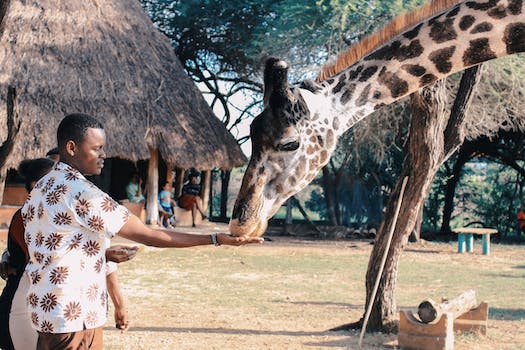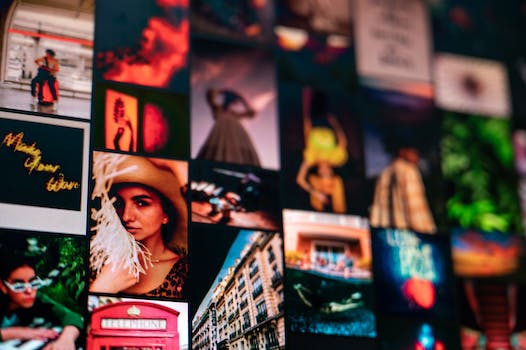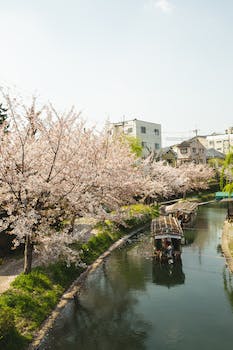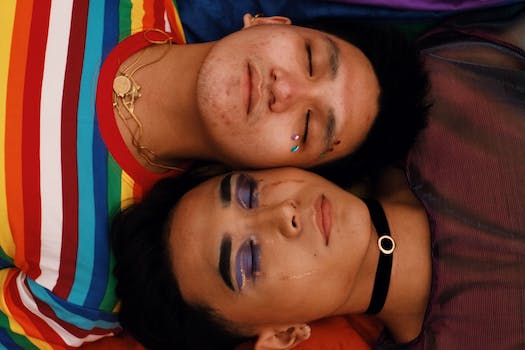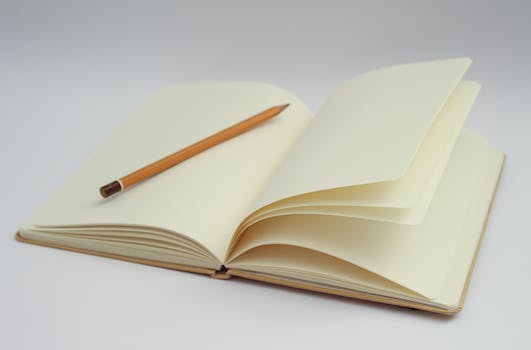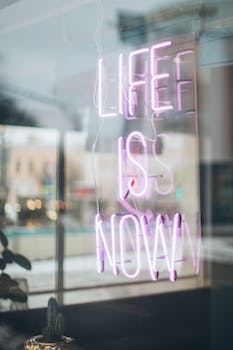

-
Table of Contents
Embracing the Richness of Aboriginal Culture
Introduction
Celebrating the Cultural Abundance of Aboriginal Communities
Aboriginal communities around the world possess a rich and diverse cultural heritage that is worth celebrating. These communities have a deep connection to their land, language, art, music, and traditional practices, which have been passed down through generations. The cultural abundance of Aboriginal communities is a testament to their resilience, wisdom, and unique contributions to the world. By recognizing and appreciating their cultural richness, we can foster understanding, respect, and inclusivity for these communities, ensuring their traditions and way of life continue to thrive for generations to come.
Traditional Aboriginal Art: A Window into Cultural Heritage
Traditional Aboriginal Art: A Window into Cultural Heritage
Aboriginal art is a vibrant and integral part of Australia's cultural heritage. It is a unique and powerful medium through which Aboriginal communities express their stories, beliefs, and connection to the land. This art form has been passed down through generations, preserving and celebrating the rich cultural traditions of Aboriginal people.
One of the most striking aspects of traditional Aboriginal art is its deep connection to the land. Aboriginal people have a profound spiritual and cultural relationship with their ancestral lands, and this is reflected in their artwork. The use of natural materials, such as ochre pigments and bark, and the depiction of landscapes and animals are common themes in traditional Aboriginal art.
The Dreamtime, or the creation period in Aboriginal mythology, is a central theme in many artworks. Dreamtime stories explain the origins of the land, its features, and the creatures that inhabit it. These stories are passed down orally from generation to generation and are often depicted in art as a way of preserving and sharing this important cultural knowledge.
Dot painting is a distinctive style of Aboriginal art that has gained international recognition. This technique involves using small dots of paint to create intricate patterns and designs. Each dot represents a specific element or feature of the story being depicted. Dot painting is not only visually stunning but also serves as a way for Aboriginal artists to connect with their ancestors and the spiritual realm.
Another important aspect of traditional Aboriginal art is the use of symbols. These symbols are a visual language that communicates complex ideas and stories. Each symbol has a specific meaning and is often used to represent elements of the Dreamtime, such as animals, plants, or natural phenomena. The use of symbols allows Aboriginal artists to convey their cultural heritage in a way that is accessible to both Aboriginal and non-Aboriginal audiences.
Traditional Aboriginal art is not just a form of creative expression; it is also a means of cultural preservation. Through their artwork, Aboriginal artists are able to pass on their knowledge, traditions, and stories to future generations. This is particularly important as many aspects of Aboriginal culture have been threatened by colonization and the loss of traditional lands.
In recent years, there has been a growing appreciation and recognition of Aboriginal art both within Australia and internationally. Aboriginal artists are now celebrated for their unique perspectives and their ability to bridge the gap between ancient traditions and contemporary society. This recognition has not only provided economic opportunities for Aboriginal communities but has also helped to foster a sense of pride and cultural identity.
In conclusion, traditional Aboriginal art is a powerful and important medium through which Aboriginal communities celebrate and preserve their cultural heritage. It is a visual representation of their deep connection to the land, their spiritual beliefs, and their ancestral stories. Through techniques such as dot painting and the use of symbols, Aboriginal artists are able to convey complex ideas and pass on their cultural knowledge to future generations. The growing recognition and appreciation of Aboriginal art have not only provided economic opportunities but have also helped to strengthen cultural identity and pride within Aboriginal communities. Traditional Aboriginal art truly is a window into the rich and diverse cultural abundance of Aboriginal communities.
Preserving Aboriginal Languages: Celebrating Linguistic Diversity

Preserving Aboriginal Languages: Celebrating Linguistic Diversity
Language is an essential part of any culture, serving as a vehicle for communication, expression, and identity. For Aboriginal communities, their languages are not only a means of communication but also a vital link to their rich cultural heritage. The preservation and celebration of Aboriginal languages are crucial in maintaining the linguistic diversity that exists within these communities.
Aboriginal languages are incredibly diverse, with over 250 distinct languages spoken across Australia. Each language carries with it a unique set of words, grammar, and expressions that reflect the deep connection between the people and their land. These languages are not just a collection of words; they embody the stories, traditions, and knowledge that have been passed down through generations.
Unfortunately, many Aboriginal languages are endangered, with only a handful of fluent speakers remaining. The impact of colonization, forced assimilation, and the erosion of cultural practices has contributed to the decline of these languages. However, efforts are being made to reverse this trend and revitalize Aboriginal languages.
One such initiative is the establishment of language centers within Aboriginal communities. These centers serve as hubs for language preservation and revitalization, providing resources, training, and support to community members interested in learning and teaching their ancestral languages. Through these centers, Aboriginal communities are reclaiming their languages and ensuring their survival for future generations.
In addition to language centers, there are also various programs and projects aimed at documenting and recording Aboriginal languages. Linguists and community members work together to create dictionaries, grammar guides, and audio recordings that capture the intricacies of these languages. These resources not only serve as valuable tools for language learners but also contribute to the overall documentation and preservation of Aboriginal languages.
Furthermore, the celebration of Aboriginal languages is not limited to the community level. National events such as NAIDOC Week and International Year of Indigenous Languages provide platforms for showcasing and promoting the linguistic diversity of Aboriginal communities. These events raise awareness about the importance of preserving Aboriginal languages and encourage people from all walks of life to engage with and appreciate the richness of these languages.
The benefits of preserving Aboriginal languages extend beyond cultural preservation. Research has shown that language plays a crucial role in shaping cognitive abilities, memory, and problem-solving skills. By preserving their languages, Aboriginal communities are not only safeguarding their cultural heritage but also nurturing the intellectual development of their people.
Moreover, the revitalization of Aboriginal languages has a profound impact on the overall well-being of community members. Language is a powerful tool for fostering a sense of belonging, pride, and identity. When individuals are able to communicate in their ancestral language, they feel a stronger connection to their culture and community, leading to increased self-esteem and improved mental health.
In conclusion, the preservation and celebration of Aboriginal languages are essential in maintaining the linguistic diversity that exists within these communities. Efforts such as the establishment of language centers, documentation projects, and national events contribute to the revitalization and survival of these languages. By preserving their languages, Aboriginal communities not only safeguard their cultural heritage but also promote cognitive development and overall well-being. It is through the celebration of linguistic diversity that we can truly appreciate the cultural abundance of Aboriginal communities.
Aboriginal Music and Dance: Expressions of Cultural Identity
Aboriginal music and dance are powerful expressions of cultural identity within Aboriginal communities. These art forms play a significant role in preserving and celebrating the rich cultural heritage of Indigenous peoples. Through music and dance, Aboriginal communities are able to connect with their ancestors, pass down traditional knowledge, and express their unique stories and experiences.
Music has always been an integral part of Aboriginal culture. It is a means of communication, storytelling, and spiritual connection. Traditional Aboriginal music is characterized by its rhythmic patterns, use of natural instruments such as clapsticks and didgeridoos, and the incorporation of vocal harmonies. Each song carries a specific meaning and is often accompanied by dance movements that further enhance the storytelling aspect.
Aboriginal dance is a vibrant and dynamic art form that reflects the diversity of Indigenous cultures across Australia. Each community has its own unique dance styles, costumes, and rituals. Dance is not only a form of entertainment but also a way to connect with the land, ancestors, and the Dreamtime – the Aboriginal belief system that encompasses creation stories and spiritual beings.
One of the most well-known Aboriginal dances is the corroboree. Corroborees are ceremonial gatherings where music, dance, and storytelling come together to celebrate important events or occasions. These gatherings are a vital part of Aboriginal culture, providing a space for community members to come together, share knowledge, and strengthen their cultural identity.
In recent years, there has been a resurgence of interest in Aboriginal music and dance, both within Indigenous communities and the wider Australian society. This renewed appreciation has led to the establishment of various music and dance festivals that showcase the talents of Aboriginal artists and provide a platform for cultural exchange.
The National Aboriginal and Islander Day Observance Committee (NAIDOC) Week is one such event that celebrates the cultural abundance of Aboriginal communities. This week-long celebration takes place annually in July and includes a range of activities, including music and dance performances, art exhibitions, and cultural workshops. NAIDOC Week provides an opportunity for people from all walks of life to come together and learn about Aboriginal culture, fostering understanding and respect.
Aboriginal music and dance also play a crucial role in healing and reconciliation processes. Many Aboriginal communities have experienced intergenerational trauma as a result of colonization and forced assimilation policies. Music and dance provide a means of healing and reconnecting with cultural roots, helping individuals and communities to reclaim their identity and strengthen their resilience.
Furthermore, Aboriginal music and dance have gained international recognition, with Indigenous artists representing Australia on the global stage. Their performances not only showcase the talent and creativity of Aboriginal artists but also challenge stereotypes and promote cultural understanding.
In conclusion, Aboriginal music and dance are powerful expressions of cultural identity that play a vital role in preserving and celebrating the rich heritage of Indigenous peoples. These art forms connect Aboriginal communities with their ancestors, pass down traditional knowledge, and provide a means of storytelling and spiritual connection. Through music and dance, Aboriginal communities are able to express their unique stories and experiences, fostering understanding and respect. The resurgence of interest in Aboriginal music and dance has led to the establishment of various festivals and events that showcase the talents of Aboriginal artists and promote cultural exchange. These art forms also play a crucial role in healing and reconciliation processes, helping individuals and communities to reclaim their identity and strengthen their resilience. Aboriginal music and dance have gained international recognition, challenging stereotypes and promoting cultural understanding on a global scale.
Q&A
1. How do Aboriginal communities celebrate their cultural abundance?
Aboriginal communities celebrate their cultural abundance through various means such as traditional ceremonies, dances, storytelling, art exhibitions, music performances, and cultural festivals.
2. Why is it important to celebrate the cultural abundance of Aboriginal communities?
Celebrating the cultural abundance of Aboriginal communities helps preserve and promote their rich heritage, fosters cultural pride and identity, educates others about their traditions, and contributes to the overall diversity and inclusivity of society.
3. What are some examples of cultural abundance in Aboriginal communities?
Examples of cultural abundance in Aboriginal communities include traditional languages, art forms like dot painting and carving, spiritual practices, oral traditions, unique music and dance styles, traditional healing practices, and connection to the land and nature.
Conclusion
In conclusion, celebrating the cultural abundance of Aboriginal communities is essential for promoting diversity, inclusivity, and understanding. By recognizing and appreciating the rich traditions, languages, art, music, and spirituality of Aboriginal cultures, we can foster a more inclusive society that values and respects the contributions of all communities. It is important to support initiatives that promote cultural preservation, education, and empowerment within Aboriginal communities, as this not only benefits the individuals and communities themselves but also enriches the broader society as a whole.



